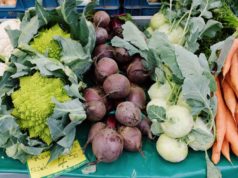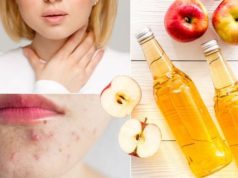Have you ever checked how colorful your food platter is? And by that I don’t mean adding artificial colors to it – do you include as many colorful fruits and vegetables as you can? If the answer is no, it is high time you did!
In his book ‘What color is your diet?’ American researcher, David Heber talks about how most Americans stick to a diet which is white/tan in color – and that is not healthy. He then breaks down fruits and vegetables into colors and their associated benefits to drive home the fact that eating a colorful platter will make you a whole lot heathier and lose weight in the process.
Here is how incorporating colorful fruits and vegetables to your diet will make you a healthier person:
Green: You have been told umpteen times as a kid that you should eat your greens. So, what is in them that make them so important? Green fruits and vegetables get their color from chlorophyll, which is known to regulate hormones associated with hunger, improve insulin levels and has anti-inflammatory properties as well.
Green leafy vegetables also contain high levels of folate, which is essential for DNA duplication and repair. According to studies, adequate folate intake helps reduce the chances of colon polyps by 30 to 40 percent. They are also loaded with essential phytonutrients including glucosinolates, flavonols, and carotenoids, which boost your immune system and your cognitive function, detox your liver and aid in energy production.
Eat them for the Vitamin A (required for good vision, bone health, healthy growth and reproduction, cell division and cell growth, healthy and clear skin), Vitamin C (a strong antioxidant which boosts the immune system, helps heal wounds, fights against common cold, reduces the risk of cancer, combats stroke, helps in treating sunburns, eczema and maintains elasticity of the skin), Vitamin K (strong anti-inflammatory properties, protects bones against osteoporosis, beneficial in blood clot formation, prevents heart disease, etc.) potassium (required for normal growth and to build muscles, maintain healthy nerve function, regulate fluid balance) and Iron (carries oxygen through your blood to every cell in your body).
What to eat: Spinach, cabbage, iceberg lettuce, kale, Swiss chard, peas, cucumber, green bell peppers, broccoli, artichokes, Brussel sprouts, kiwi fruit, celery, okra.
Cooking tips: To ensure that the nutrients don’t get lost by exposure to excessive heat, opt for methods such as steaming while cooking your greens.
Red: Red fruits and vegetables get their color from lycopene, a powerful free radical scavenger, ellagic acid (strong anti-oxidant) and anthocyanins. According to studies, a lower risk of prostate cancer has been reported in men who consume more tomato based products than those who don’t. These powerful antioxidants reduce the damage caused to cells by free radicals, thereby helping fight cancer and heart diseases. Red fruits and vegetables are also rich in Vitamins A and C.
A diet rich in red fruits and vegetables will help reduce the chances of heart disease and stroke, risk of macular degeneration, reverse memory loss, lower blood pressure and support joint tissue for people suffering from arthritis.
What to eat: Cherries, tomatoes, red apples, dark grapes, raspberries, watermelons, plums, strawberries, pomegranate, cranberry, blood oranges, pink grapefruits, beets, red cabbage, radish, red bell peppers, red chili peppers, red onions, red leaf lettuce
Cooking tips: Rather than having them raw, it’s better to cook tomatoes as that enhances their nutritional value by increasing the lycopene that can be absorbed by the body.
Purple, indigo and blue: According to research conducted by the National Health and Nutrition Study (NHANES), people who consume a diet rich in purple fruits and vegetables have lesser chances of developing high blood pressure and are also less likely to be overweight. These fruits and veggies get their color from a plant pigment known as Anthocyanin. This pigment is responsible for preventing genetic damage and reducing inflammation, hence is needed for the body to fight cancer, stroke and heart diseases.
They also contain flavonoids which help lower LDL (bad cholesterol) levels, fiber, Vitamin C and resveratrol (antioxidants which protect against cancer and heart disease). By eating more fruits and vegetables that are deep purple or blue in color, you can boost your immune system, reduce the risk of Alzheimer’s, boost your digestion process and improve your memory.
What to eat: Plums, blueberries, prunes, blackberries, black currants, purple artichokes and grapes, eggplant, purple cabbage, asparagus, all belong to the blue/purple family.
Cooking tips: Since they are rich in anthocyanins, which are water-soluble, it’s best to eat these fruits and vegetables raw, steamed or roasted.
Orange and yellow: Bright orange and yellow fruits and vegetables contain carotenoids such as zeaxanthin, lycopene and beta-carotene. Carotenoids, especially beta-carotene are known to protect the body against stomach and esophagus cancer. These brilliantly colored fruits and veggies are also packed with Vitamin A, Vitamin C, potassium, fiber and flavonoids. Add them to your diet to reduce the risk of macular degeneration, help maintain healthy eyes, reduce the risk of cancer and heart diseases, lower LDL cholesterol, boost immunity, and have healthy skin.
What to eat: Pumpkins, yellow bell pepper, butternut squash, sweet potatoes, corn, oranges, mangoes, peaches, papaya, pineapple, cantaloupe, bananas, lemons, apricots and grape fruits.
Cooking tips: Make jams, jellies and squashes with citrus fruits, make a pumpkin pie or add it in soup.
White, tan and brown: So, you thought that all white colored food is unhealthy (white bread, sugar)? But, did you know that many white colored fruits and vegetables are loaded with essential minerals and vitamins. According to a study published in Stroke: Journal of the American heart Association, Dutch researchers who studied 20,069 heart patients discovered that patients who ate white fleshed fruits such as apple and pear had a 52 percent lower stroke incidence. This is because fruits such as apples and pears are a rich source of dietary fiber, along with the phytochemicals such as quercetin, allicin and selenium, which are known to be anti-inflammatory in nature, inhibit the proliferation of cancer cells and lower cholesterol.
What to eat: Garlic, potatoes, apples, turnip, onions, white peaches, mushroom, lychees, bananas, white pear, cauliflower, white corn, etc.
Cooking tips: You can balance the colors in your plate by using sautéed or steamed cauliflower florets, white onions and roasted turnips and potatoes. These intensify the flavors and pack a punch nutritionally. Consume potatoes with the skin (you can bake them in the jacket) as it is a rich source of iron.
Author Bio:
I am Emily Connor, 26-year-old psychology student, and a content contributor at Dissertation Help provider and my interests range from productivity, inspiration to reading anything motivational over the internet.












